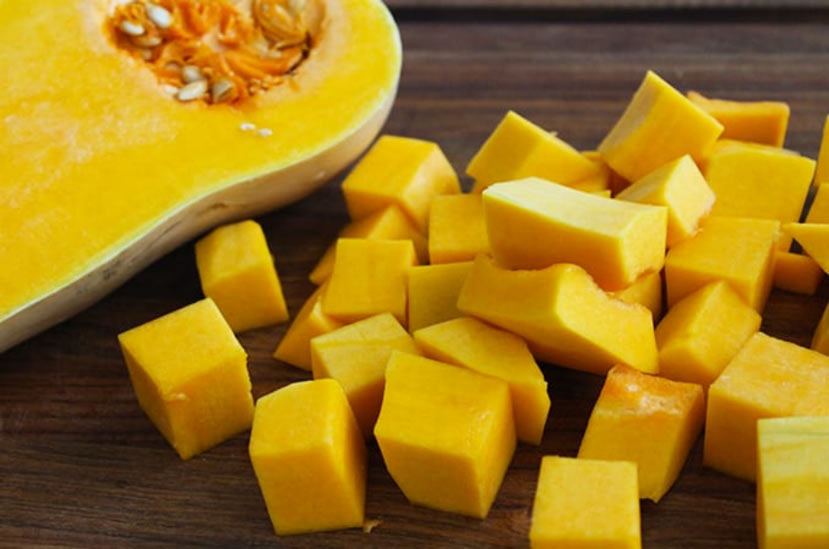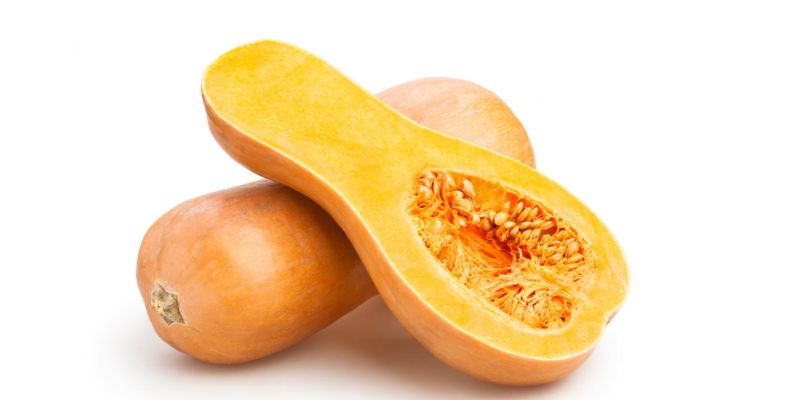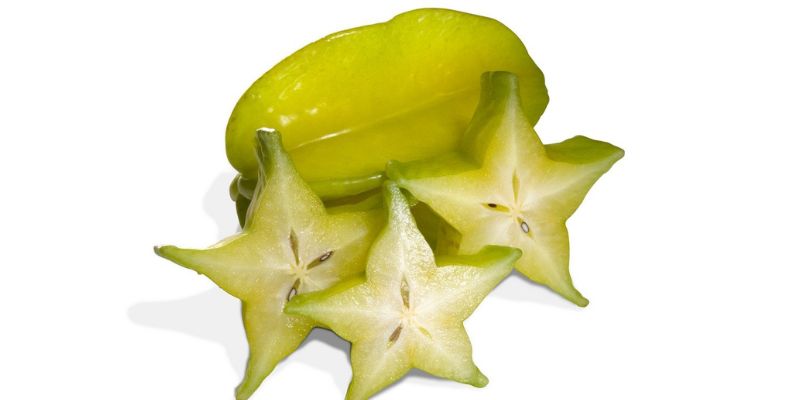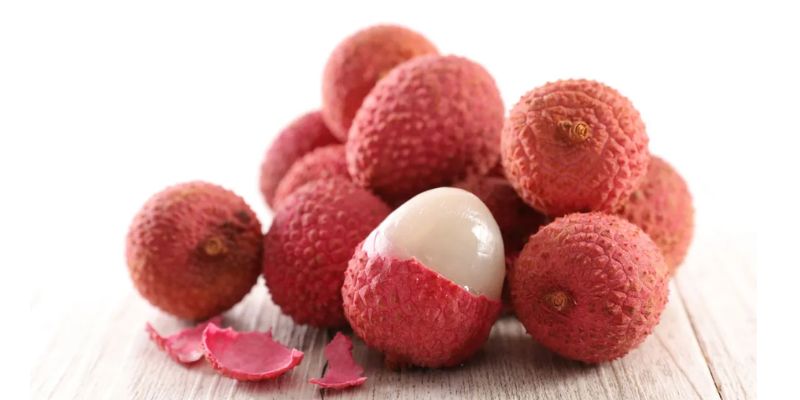Are you looking for a nutritious and delicious vegetable to add to your diet? Butternut squash is the perfect choice! It has many health benefits, from providing fiber, vitamins, minerals, and antioxidants that can support immunity and reduce inflammation.
It is tasty but also highly versatile; you can roast it in the oven or boil and puree it as part of a soup. Plus, butternut squash has been shown to help protect against certain diseases while promoting healthy gut bacteria balance.
With all these powerful benefits, how could you not want to try adding this superfood to your regular meals? Discover why this winter squash should be a staple in your pantry and kitchen!
What is Butternut Squash
Butternut squash is a winter squash that grows on vines and looks like an elongated pear with light tan skin and orange flesh. Butternut squash contains vitamins A and C, fiber, potassium, manganese, and magnesium. It's also low in fat and calories.
What Butternut Squash Can Do for You

Butternut squash is a nutritious and versatile vegetable that offers numerous health benefits. Here are some of the benefits of incorporating butternut squash into your diet:
Nutrient-Rich
Butternut squash contains essential nutrients, including vitamins A, C, and E, potassium, magnesium, and dietary fiber. These nutrients support immune function, promote healthy skin, aid digestion, and contribute to overall well-being.
Antioxidant Powerhouse
Butternut squash contains antioxidants like beta-carotene, which your body converts into vitamin A. These antioxidants protect cells from damage, help neutralize harmful free radicals, and reduce the risk of chronic diseases like heart disease and certain cancers.
Supports Eye Health
The high vitamin A content in butternut squash is beneficial for eye health. Vitamin A is essential for maintaining good vision, especially in low light conditions, and helps protect against age-related macular degeneration and other eye diseases.
Promotes Digestive Health
With its high fiber content, butternut squash promotes a healthy digestive system. Fiber adds bulk to the stool, supports regular bowel movements, and may help prevent constipation and maintain a healthy gut microbiome.
Weight Management
Butternut squash is low in calories and fiber, making it a satisfying and nutrient-dense food. Including butternut squash in your meals can help with weight management by promoting feelings of fullness and reducing overall calorie intake.
Heart Health
The combination of antioxidants, fiber, and potassium in butternut squash contributes to heart health. Antioxidants protect against oxidative stress, fiber helps lower cholesterol levels, and potassium supports healthy blood pressure levels.
Anti-Inflammatory Properties
Butternut squash contains phytonutrients with anti-inflammatory properties, such as beta-carotene and quercetin. These compounds help reduce inflammation in the body associated with various chronic conditions.
Blood Sugar Control
The fiber content in butternut squash helps regulate blood sugar levels by slowing down the absorption of sugars into the bloodstream. This can benefit individuals with diabetes or those aiming to maintain stable blood sugar levels.
Incorporating butternut squash into your diet is easy. It can be roasted, steamed, sautéed, or pureed into soups, stews, curries, and side dishes. Its naturally sweet flavor and creamy texture make it popular for savory and sweet recipes. Regular butternut squash can provide various health benefits while adding delicious variety to your meals.
How to Peel Butternut Squash

Peeling butternut squash can be tricky due to its thick skin and shape.
Here's a step-by-step guide on how to peel a butternut squash:
- Start by washing the butternut squash under running water to remove any dirt or debris from the surface.
- Using a sharp knife, carefully slice off both ends of the squash to create a stable base for cutting.
- Stand the squash upright on one end and cut it in half lengthwise. Take caution while cutting through the tough skin.
- Remove the seeds and stringy fibers from the center of each squash half with a spoon or scooping tool.
- Take one squash half at a time and place it flat on a cutting board, skin side up. Using a vegetable peeler or a sharp paring knife, start peeling the skin from top to bottom. Apply gentle pressure and work around the squash, removing the skin in thin strips. Ensure that you remove all the green or tough portions of the skin.
- Repeat the peeling process with the other half of the squash.
- Once both halves are peeled, you can chop, dice, or slice the butternut squash as needed for your recipe.
It's important to exercise caution while handling sharp knives and be mindful of your fingers. If you find it challenging to peel the squash, you can also place it in the microwave for a couple of minutes to slightly soften the skin, making it easier to peel.
Remember, if you prefer a quicker option or want to avoid dealing with peeling, you can also find pre-cut butternut squash in many grocery stores, which saves you time and effort in the kitchen.
How to Cook Butternut Squash
Butternut squash is a versatile vegetable that can be cooked in various ways, depending on your preference. Here are three popular methods for cooking butternut squash:
Roasting
- Prechauffez votre four à 400°F (200°C).
- Coupez le squash de butternut en petits morceaux.
- Combine olive oil, salt, pepper, and the desired herbs or spices into the cubes.
- Disposez les cubes sur une plaque à pâtisserie en une seule couche.
- Cuire dans une poêle préchauffée pendant environ 25 à 35 minutes, ou until le squash est doux et légèrement brun, en tournant les cubes une fois au milieu de la cuisson.
- You can eat roasted butternut squash as a side dish, in salads, or in a variety of recipes.
Steaming
- Peel the butternut squash and cut it into evenly sized-cubes.
- Placez les cubes dans une jarre à vapeur sur du lait chaud.
- Couvrez la poêle et faites-la bouillir pendant dix à quinze minutes ou until le squash est doux lorsqu'il est percé avec un couteau.
- Remove from heat and let it cool slightly before using it in your desired recipe.
Sautéing
- Peel the butternut squash and cut it into small cubes or thin slices.
- Heat a skillet over medium heat and add olive or your preferred cooking oil.
- Add the butternut squash cubes or slices to the skillet and season with salt, pepper, and any desired herbs or spices.
- Sauté for about 10-15 minutes, stirring occasionally, until the squash is tender and lightly browned.
- Use sautéed butternut squash as a side dish, in stir-fries, or as a topping for salads.
FAQs
Which squash is healthiest?
Butternut squash is one of the healthiest varieties due to its high nutrient content. It's an excellent source of fiber, vitamin A, vitamin C, magnesium, potassium, and manganese.
Is butternut squash high in sugar?
Butternut squash is low in sugar, with only 8 grams of total carbohydrates per half cup. This makes it great for those looking to reduce their daily sugar intake.
What does butternut squash do for the body?
Butternut squash offers a range of health benefits. It's high in fiber, which can help promote digestive health and regularity. It also contains vitamin A, which helps maintain healthy eyesight, skin, and immune system. Its high magnesium content may help reduce inflammation and decrease your risk of chronic disease.
Conclusion
Incorporating butternut squash into your diet is an excellent way to increase your nutrients and well-being. Its versatile nature can make cooking easy and fun, and by dishing up the numerous health benefits, it can positively contribute to longer-term health outcomes.
Butternut squash is a delicious vegetable option to enjoy and offers numerous health benefits. Try it out today – you won't regret it! Start slowly by thinking of incorporating it into your meals or snacks. Show yourself some love and unlock the many benefits of butternut squash today!



